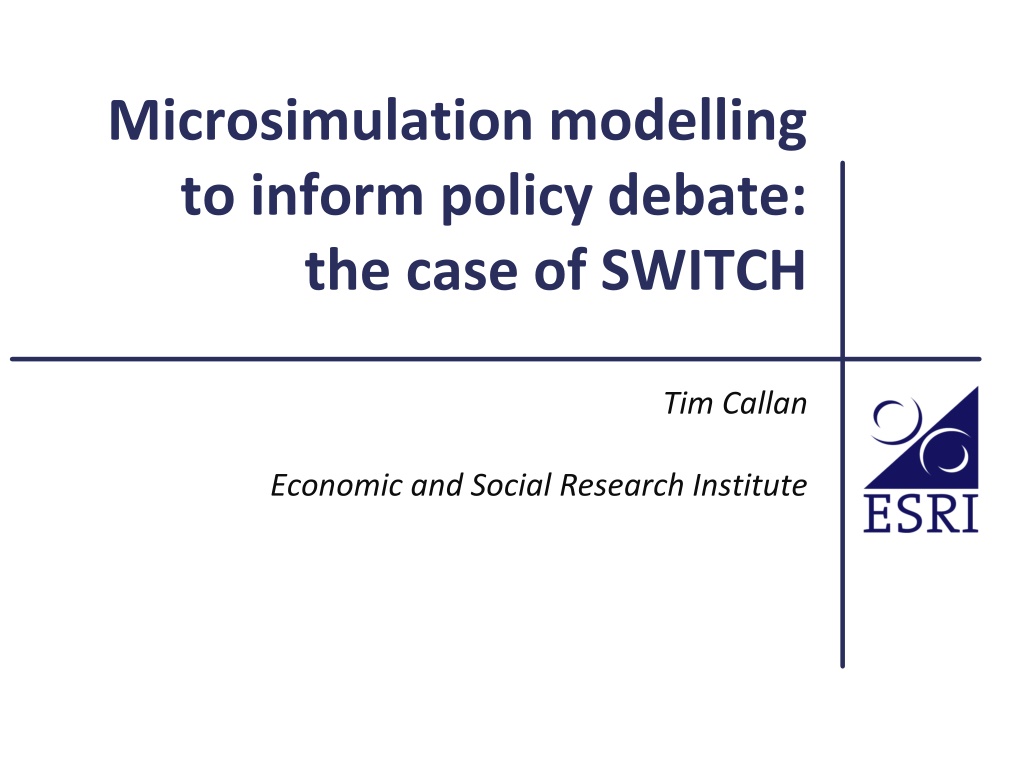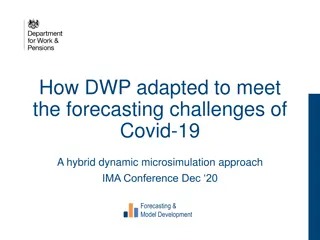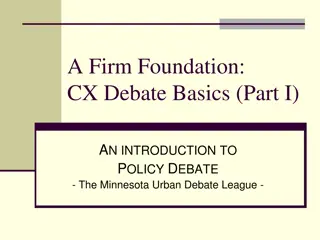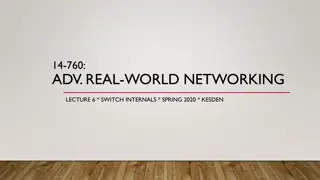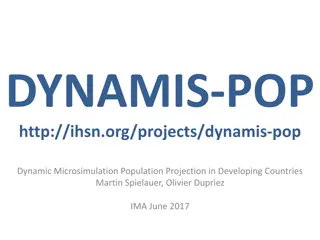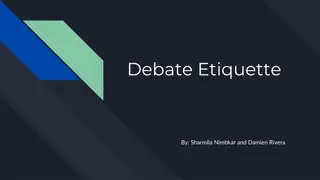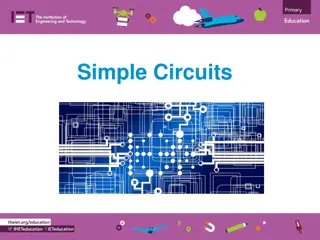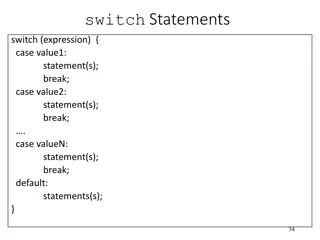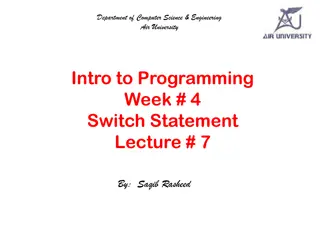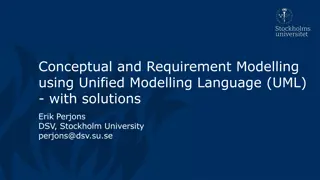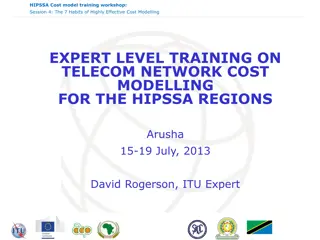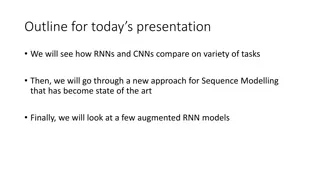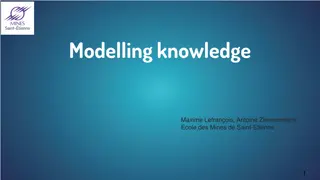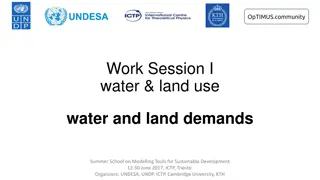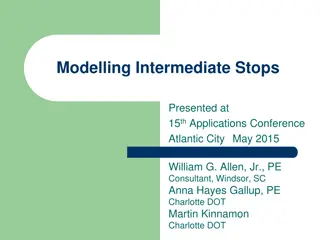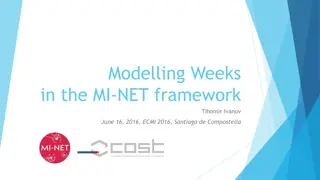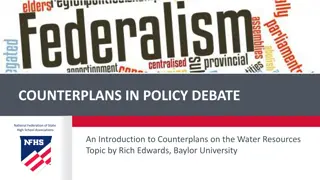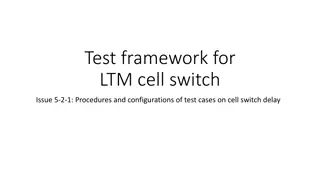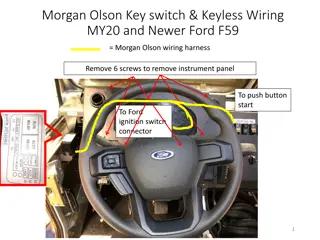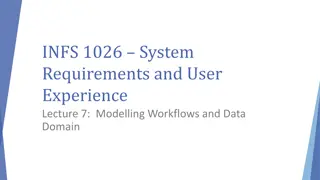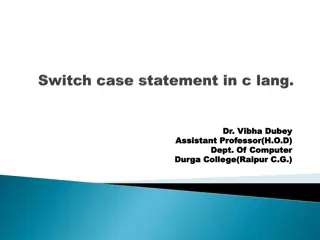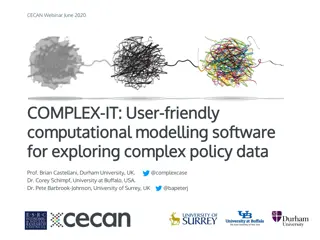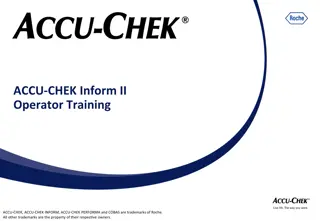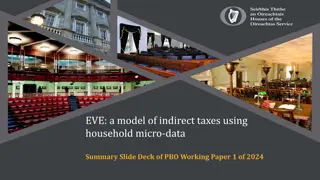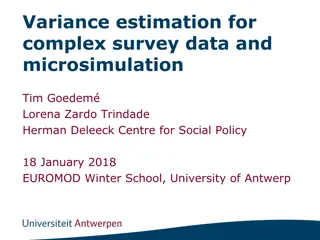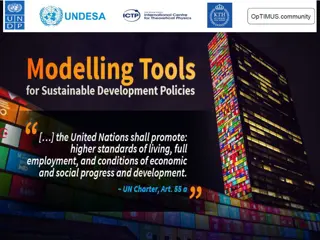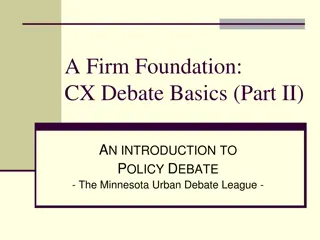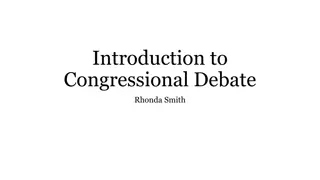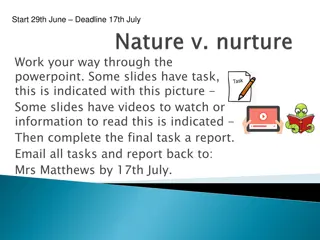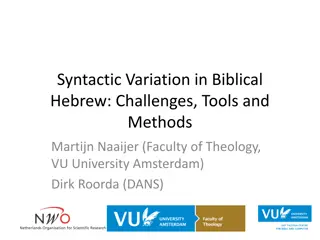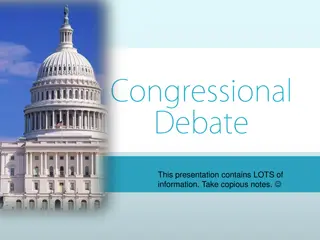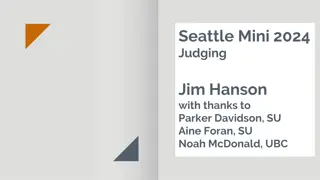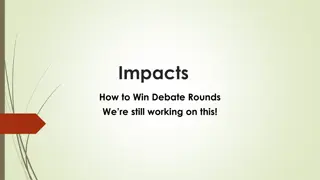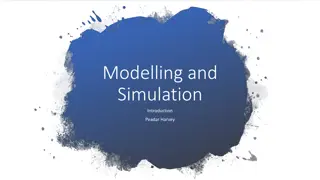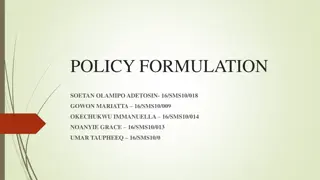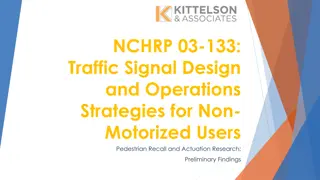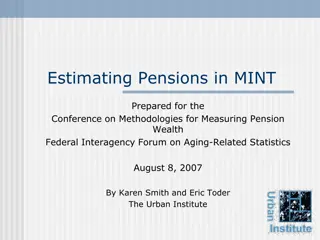Microsimulation Modelling to Inform Policy Debate: The Case of SWITCH
This presentation discusses the usage of the SWITCH microsimulation model to inform policy debates by simulating the impact of tax and welfare policy reforms on household incomes and work incentives. It covers the areas investigated using SWITCH, selected users of SWITCH research, and the role of SWITCH in policy analysis. The SWITCH model is utilized by various government departments and advisory groups to assess policy changes related to income tax, welfare, property tax, childcare, and more.
Download Presentation

Please find below an Image/Link to download the presentation.
The content on the website is provided AS IS for your information and personal use only. It may not be sold, licensed, or shared on other websites without obtaining consent from the author. Download presentation by click this link. If you encounter any issues during the download, it is possible that the publisher has removed the file from their server.
E N D
Presentation Transcript
Microsimulation modelling to inform policy debate: the case of SWITCH Tim Callan Economic and Social Research Institute
Overview Context: the role of SWITCH Simulating Welfare and Income Tax CHanges A tour of the SWITCH model Illustrative applications to policy issues Future potential
SWITCH and SILC: Informing policy debate and policymakers Analysing the potential impact of tax and welfare policy reforms on household disposable incomes on financial incentive to work faced by individuals Official post-budget social impact assessment / poverty proofing Assessing cost, distributive and/or incentive implications of actual or potential policy changes e.g., medical card, UHI, property tax, childcare
Areas investigated using SWITCH Income tax Welfare PRSI & levies Property tax Childcare costs & ECCE USC Public sector pay Labour supply Social welfare and occupational pensions Social impact assessment Water charges & subsidies Gender impact Housing: HAP & differential rent Indirect taxes Medical and GP visit cards
Selected users of SWITCH research Dept of Public Expenditure and Reform* Dept of Social Protection* Dept of Environment Dept of Finance* Advisory Group on Tax and Welfare Tax and Welfare Integration Group Commission on Taxation (Mark 2) Dept of Health Interdepartmental Group on Property Tax Social Protection Committee of EU OECD EU Commission *=makes direct use of SWITCH model
Editing a policy (2): Changing parameter values
Administrative data and household surveys Differing strengths and weaknesses Choice of data source depends on the purpose of the analysis SILC could be seen as a hybrid Data gathered through household survey; And with permission of the respondents, who supply PPSNs, data supplemented with information from administrative records
SWITCH model: Background Microsimulation model: currently based on CSO s SILC 2010 data soon to be re-based using SILC 2013 Database is adjusted to represent the 2016 population Representative sample of the population (12,000 individuals) Simulates taxes & benefits to arrive at disposable income Counterfactual analysis: replacement rates, marginal effective tax rates, minimum wage
Example 1: Medical/GP Visit Cards SWITCH calculates assessable income based on current income age living alone/with family (if under 70) number of children housing costs actual childcare costs No travel to work costs in the underlying data (SILC) estimation procedure could be developed, but items covered capture most of the variation in assessable income
% of Tax Units with a GP Visit Card by Income Decile 40% GP Visit Card, SWITCH modelled GP Visit Card, SILC reported 30% 20% 10% 0% Lowest income decile 2nd 3rd 4th 5th 6th 7th 8th 9th Highest income decile
Example 2: Does Work Pay? It is easy to construct examples of households where individuals face high replacement rates A key issue is whether such examples are realistic or representative Detailed microsimulation analysis of a nationally representative sample of households is needed to identify the nature and extent of problems in this area and to explore policy options to address such difficulties
Employment Rate* by Replacement Rate Category, 2015 100 Employment Rate (%) 95 90 85 80 Employment Rate by Rep Rate Category 75 Overall Employment Rate 70 65 60 Replacement Rate *Employment Rate defined as EE/(EE+UE)
Distribution of Replacement Rates, Ireland 2015 Unemployed on JA/JB Rep Rate Category Employees % % 18.3 >70 16.2 11.0 >80 8.3 5.6 >90 3.4 2.8 >100 1.4 163,000 Est. Pop. 1,581,000
Impact of the Back to Work Family Dividend on Replacement Rates first year in employment Replacement Rate Category Unemployed on JA/JB with Children 2015 2015 No BTWFD With BTWFD >70 39.2 31.6 >80 24.2 16.5 >90 12.8 8.7 >100 6.6 4.8
Microsimulation: how does it work? Large scale nationally representative survey Specify baseline policy, reform policy Read in detailed information for each individual/family/household e.g., income components, ages, children Define relevant income for each scheme income tax, PRSI, welfare, medical/GP visit card Simulate benefit to which entitled, or tax/PRSI/USC liability Summarise results along dimensions of interest
What can microsimulation tell you? Cost estimate Or how far will a given budget stretch? Profile of beneficiaries, and size of gain/loss Wide range of dimensions available Income: disposable, gross, equivalised Demographic characteristics: age, gender, family type, household type Socio-economic characteristics: employed, unemployed, not in labour market Can optimise design of scheme in light of initial findings iterative process
Microsimulation: Some advantages Calibrated to represent the next budgetary year Simulate policies using the appropriate policy unit e.g., tax/welfare unit, PRSI unit=individual, medical card unit Can analyse policy impact at these levels and also at household level Uses current rather than annual income current income is the basis for welfare entitlements, medical card potential to use annual income as well Information on both recipients and non-recipients
Summing up..... Microsimulation methods can add valuable information for the analysis of potential policy changes Requires early engagement of policy makers with researchers, and building of capacity Crucially dependent on a nationally representative sample with detailed and high quality information on relevant variables for policy Administrative data contributes substantially to the quality of the underlying data
Thank you for your attention More information at: www.esri.ie/switch Questions welcome to: tim.callan@esri.ie or switch@esri.ie
